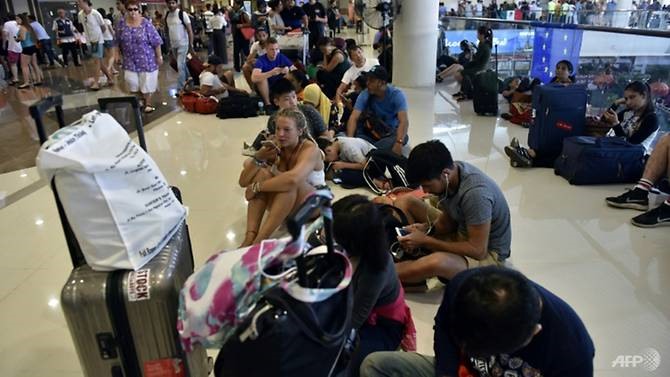 Life & Style
Life & Style

Bali closed its international airport following a volcanic eruption on the Indonesian resort island that sent thick smoke and ash billowing 2,000m into the air, an official said on Friday.
 |
| Passengers at the Ngurah Rai International airport in Denpasar, Bali, after flights were cancelled on Nov 27, 2017, due to the threat of an eruption by the Mount Agung volcano. — AFP Photo |
DENPASAR — Bali closed its international airport following a volcanic eruption on the Indonesian resort island that sent thick smoke and ash billowing 2,000m into the air, an official said on Friday.
Ngurah Rai airport was due to be closed from 3am to at least 7pm Friday after a pilot report detected volcanic ash as high as 23,000 feet following Mount Agung’s eruption on Thursday."Based on the meteorology agency prediction, the volcanic ash will reach the airport on Friday morning," airport spokesman Yanus Suprayogi said in a statement, adding that a possible extension of the airport closure after 7pm would be reviewed.
The eruption of Mount Agung in eastern Bali on Thursday has triggered at least 48 flight cancellations including those operated by Malaysia-based AirAsia and Australia’s JetStar.
The disruption has affected more than 8,000 travellers.
Singapore Airlines (SIA) also rescheduled its flights between Singapore and Denpasar.
SIA passengers travelling to Bali between Thursday and Friday may also be able to rebook or request a refund of their tickets, it said in a Facebook post.
Ash is dangerous for planes as it makes runways slippery and can be sucked into their engines.
Despite the eruption the volcano’s status has not been raised by Indonesia’s volcanology agency and remained at alert level, while the Volcano Observatory Notice For Aviation has issued an orange level warning.
Mount Agung rumbled back to life last year and has been erupting periodically since.
The volcano’s eruption threat reared its head again in November, sparking travel chaos and pounding Bali’s lucrative tourism industry and its wider economy.
There is a 4km no-go zone around Agung’s peak.
Agung’s last major eruption in 1963 killed around 1,600 people.
Indonesia is the world’s most active volcanic region and lies on the Pacific "Ring of Fire" where tectonic plates collide, causing frequent volcanic and seismic activities. — AFP




